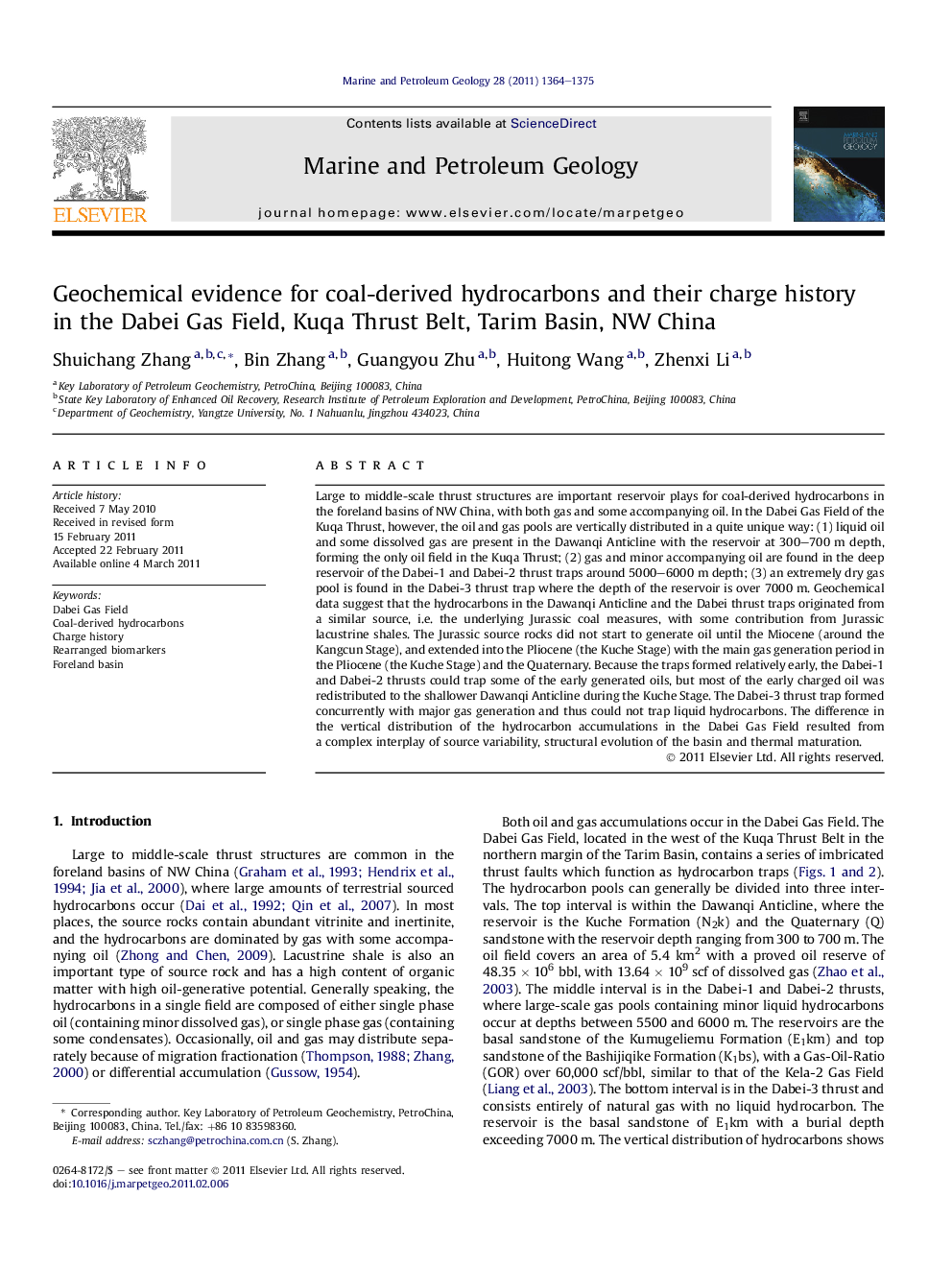| Article ID | Journal | Published Year | Pages | File Type |
|---|---|---|---|---|
| 4696024 | Marine and Petroleum Geology | 2011 | 12 Pages |
Large to middle-scale thrust structures are important reservoir plays for coal-derived hydrocarbons in the foreland basins of NW China, with both gas and some accompanying oil. In the Dabei Gas Field of the Kuqa Thrust, however, the oil and gas pools are vertically distributed in a quite unique way: (1) liquid oil and some dissolved gas are present in the Dawanqi Anticline with the reservoir at 300–700 m depth, forming the only oil field in the Kuqa Thrust; (2) gas and minor accompanying oil are found in the deep reservoir of the Dabei-1 and Dabei-2 thrust traps around 5000–6000 m depth; (3) an extremely dry gas pool is found in the Dabei-3 thrust trap where the depth of the reservoir is over 7000 m. Geochemical data suggest that the hydrocarbons in the Dawanqi Anticline and the Dabei thrust traps originated from a similar source, i.e. the underlying Jurassic coal measures, with some contribution from Jurassic lacustrine shales. The Jurassic source rocks did not start to generate oil until the Miocene (around the Kangcun Stage), and extended into the Pliocene (the Kuche Stage) with the main gas generation period in the Pliocene (the Kuche Stage) and the Quaternary. Because the traps formed relatively early, the Dabei-1 and Dabei-2 thrusts could trap some of the early generated oils, but most of the early charged oil was redistributed to the shallower Dawanqi Anticline during the Kuche Stage. The Dabei-3 thrust trap formed concurrently with major gas generation and thus could not trap liquid hydrocarbons. The difference in the vertical distribution of the hydrocarbon accumulations in the Dabei Gas Field resulted from a complex interplay of source variability, structural evolution of the basin and thermal maturation.
► The unique vertical distribution of hydrocarbon has been described and discussed. ► Three types of oils have been identified based on geochemistry data. ► Hydrocarbon charge history has been rebuilt based on basin modeling. ► GC × GC-TOFMS method has been used to detect PAH and diamondoid hydrocarbons.
